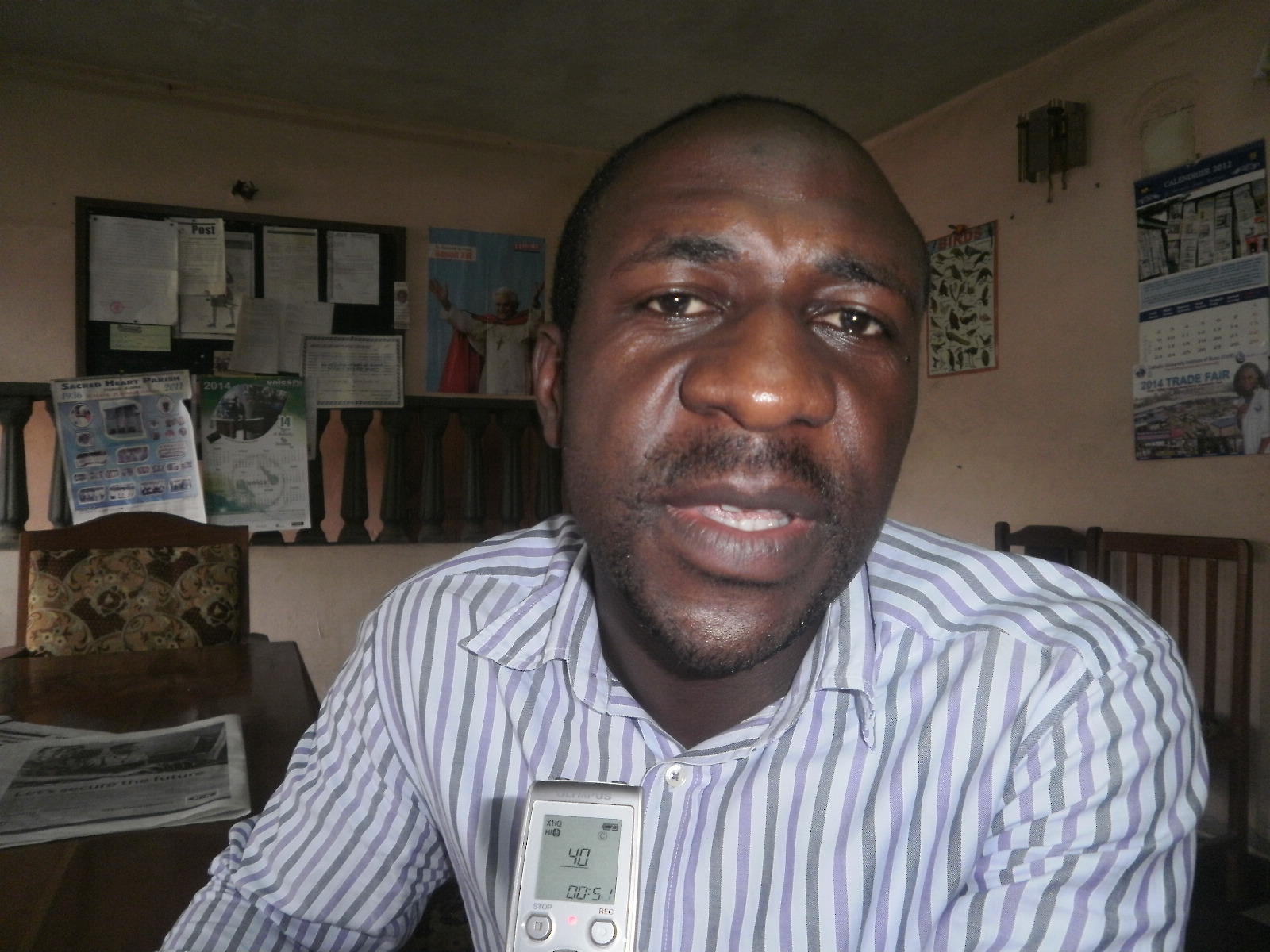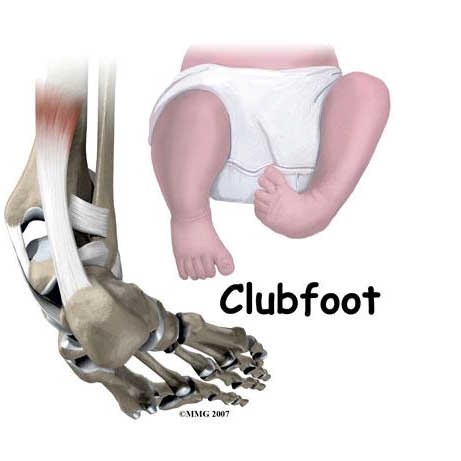Walter Wilson Nana
Buea, Cameroon
Clubfoot is a foot deformity in which a child is born with feet twisted inwards and is one of the most common physical disabilities affecting children in many African countries including Cameroon. The prevalence is on the increase in Cameroon and so the Cameroon Baptist Convention Health Services and their partners have wade in to put smile on the faces of the affected persons and their families. On how the Cameroon Clubfoot Care Project is going on, Consultant Orthopedic Surgeon at the Baptist Hospital in Mutengene, Southwest Region, Dr. Henry Ndasi, explained in this exclusive interview. He gives insights on what clubfoot is all about and the treatment that is available for it.
Read on!
Scientifically and medically, what is clubfoot all about?
Clubfoot is a deformity of the foot, which a child is born with. The exact cause of it, we do not know. However, scientifically, a number of reasons have been forwarded for the causes of clubfoot. It is genetic. It has been shown that once a parent has clubfeet; there is about 30 percent chance that the child may have clubfoot. In the general population, the incident is about one to two in a thousand births. If one thousand children are born in Cameroon, about two of them will be born with clubfoot.
How is it a health problem?
The children born with clubfoot would never be able to walk well. They are going to walk with an abnormal foot that is turn inwards. That is the clubfoot is a foot deformity, wherein instead of walking on the flat part of your feet, you are walking with the side. Your feet are twisted inwards. The part you are supposed to be walking on is instead pointing inside. You are now walking with the inside of your feet. If you are walking with the inside of your feet, it means that you cannot run, you cannot walk fast and you cannot wear shoes. Later in life, you are looked funny, people laugh at you and you cannot fully integrate in the society. When you have both feet involved, it means you cannot run. So, it is a serious health problem to the person. You can have clubfoot on one leg or both legs.
What is the prevalence rate of clubfoot in Cameroon?
The aforementioned statistics is what has been obtained across the African continent. In Cameroon we are yet to have a data on clubfoot. Nobody has done research to my knowledge in the country on clubfoot. There is no documentation on the treatment of clubfoot in the country. But we see a lot of people with deformed foot. We assume that our statistics and prevalence are high as those in other African countries.
The Cameroon Baptist Convention Health Service and the Southwest Regional Delegation of Public Health are working on this problem. How much help have you given so far?
We started the Cameroon Clubfoot Care project in January 2014, thanks to support from the Christian Blind Mission, CBM. They have come to partner with us as part of the Disability Programme they have already been working on with the Cameroon Baptist Health Services. In this pilot phase, we have four centres involved; Baptist Hospital, Mutengene, Banso Baptist Hospital, Mbingo Baptist Hospital and Saint Joseph Children and Adult Rehabilitation Home, SAJOCAH, Bafut. These are pilot treatment centres. In these centres the CBM and the Cameroon Baptist Health Service are providing materials that will be used to correct the deformities over the next two years free of charge. They are also sponsoring the awareness part of this project, so that in the next two years, we can identify children with clubfeet, create awareness about clubfeet, identify partners we can work with for long term in the treatment of clubfeet and also bring in as many stakeholders as possible so that it becomes a national issue. We are providing training to health facilities that have physiotherapists and eventually, everyone can treat clubfoot in a standardised manner, which is the internationally recognised method, called the Ponseti technique. For now, in the Southwest Region, we are providing clubfoot treatment at the Mutengene Baptist Hospital. The clubfoot treatment involves what we call serial casting. When a child is born, as soon as it is possible after birth, the child is diagnosed and then enrolled in the programme. This programme will involve putting a plaster or POP in the child’s leg to correct the deformity. Every week, the POP is changed and in five to six weeks, the foot will be corrected. Once it is corrected, the child will be given a special shoe called a brace. The child will wear the shoe(s) in the most part of the day and will have these on for three months and subsequently for about two to three years. Through this method, which we call the Ponseti technique of treatment, the foot is going to be corrected permanently for life.
Are people coming for treatment? Do you have cases you are working on already?
We have been working on treatment over the years. The only difference now is that it is a project, where we have some forms to fill and do assessment. We have been doing it but for now, we are making it a more organised form of treatment. We have the partners; CBM and others coming to look at the forms. We can have other centres involved. We are talking with the ARCH in Mutengene, the Presbyterian Rehabilitation Centre in Kumba to develop partnerships so that we do it as a project. It will be different from the routine care that has been ongoing. Formerly, it was paid for. Now, it will be free of charge.
How much information does the Ministry of Public Health have about clubfoot and what you are doing?
We assume the officials in the Ministry of Public Health know about clubfoot. However, as a project, the Cameroon Baptist Convention has written to the Ministry of Public Health, they are aware of what we are doing and we shall be meeting with them formally so that the project can be expanded at the national level. The stakeholders’ conference is part of the project and that will be done. It is part of our mission. We have started as an organisation but government is the main provider of healthcare across the country. What we are doing is not out of standard healthcare. Government is being informed and is aware of what is happening on the ground in the area of disability. Government is the leader and they must take leadership. Cameroon Baptist Convention may be initiating it but we are all partners in the healthcare sector of the country.
What is the explanation for the name of the disease called CLUBFOOT?
If you look at a club, it is stick that is curved at the tip. It is used by people who play golf. So, you can say the length of the stick is the leg and the club part is the foot that is turned inwards, almost like a C. So, clubfoot is that your foot looks like a club. That is how simple it can be understood. Once you have the clubfoot, there are some changes that you will notice with the foot. In this project, we are not just out to have the clubfoot treated, clubfoot exist with other diseases. It just occurs alone and there is no other problem with that child. Clubfoot can also occur in the presence of other diseases. So, it can come as a symptom. There are other diseases that patients will have, who also have clubfoot. We will be able to identify that and treat it properly. And some people also confuse clubfoot for bow-legs. All these aspects of the deformity must be identified and treated appropriately. We want to avoid a situation whereby a simple correctable problem becomes a disability in a child simply because of the absence of awareness and ignorance. That is what we are all about.
Where can people suffering from clubfoot go for treatment?
The clubfoot treatment, using the Ponseti Technique is effective for children less than two years of age. 0 – 2 years of age can have full Ponseti treatment with correction of the situation. But for those who are above two years, we can correct the foot with an initial surgery. They may have to undergo some serial casting again and do surgery to get the foot corrected. But the project treats those from 0 – 2 years free of charge and those who will require some form of surgery, we can also correct. They can come to Baptist Hospital, Mutengene, where we are based and the serial casting will be done for them.





